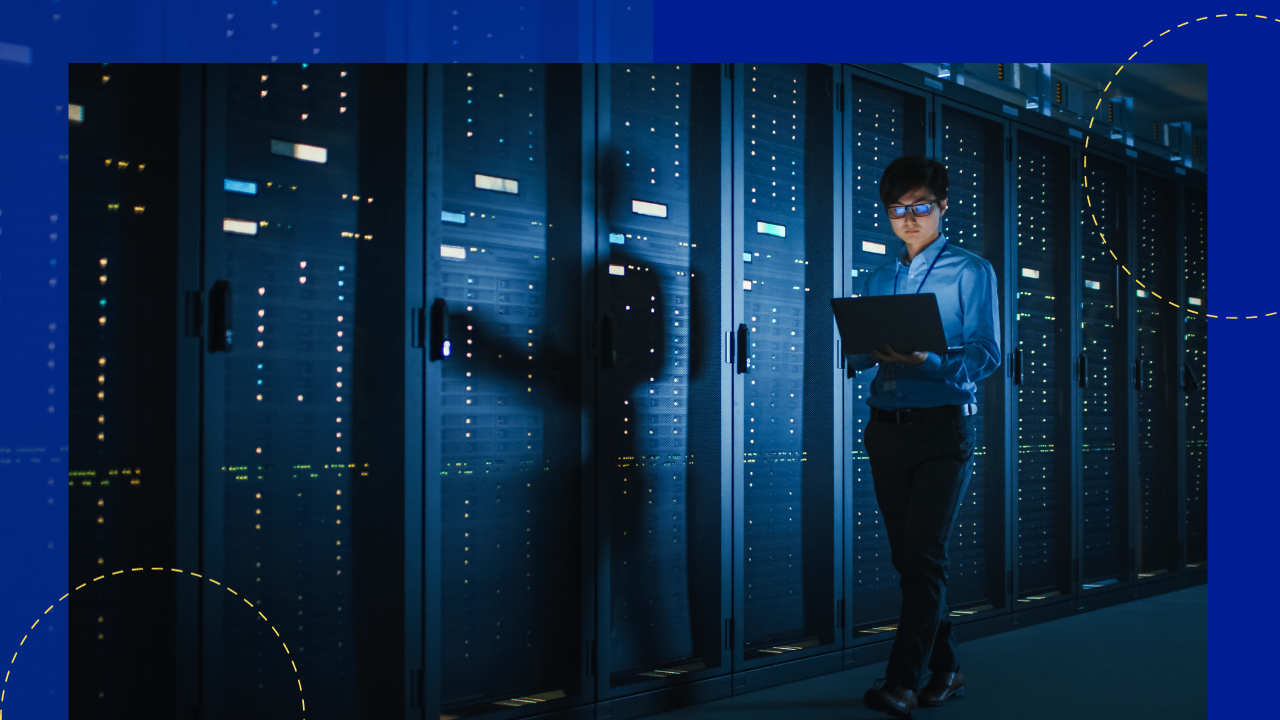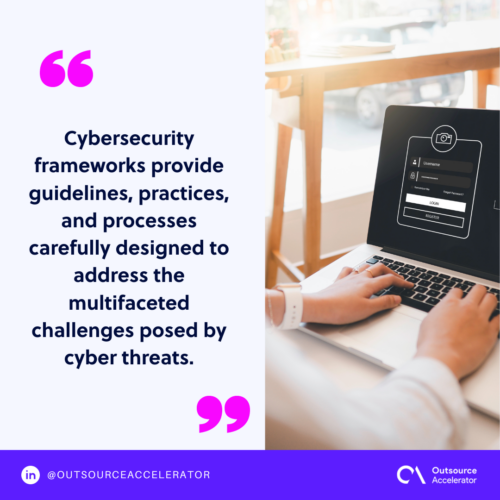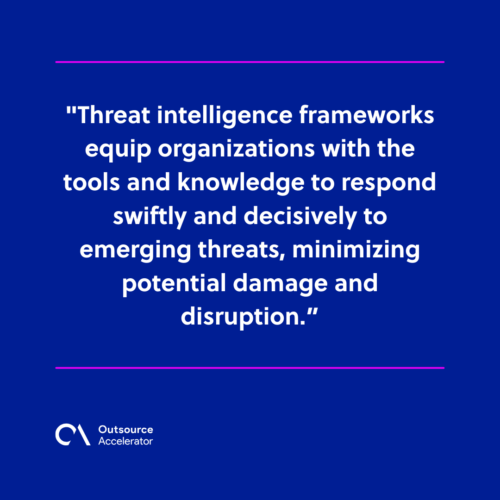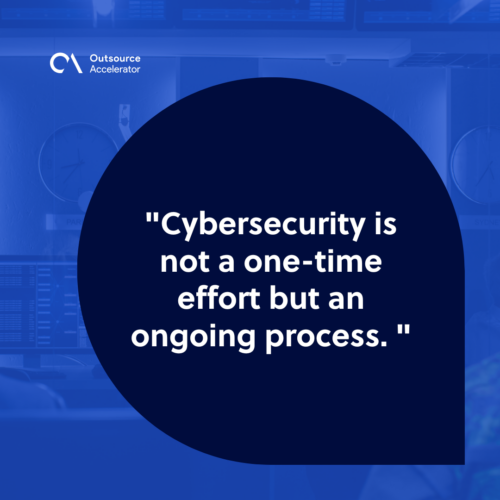Cybersecurity frameworks: Types and security standards

With the expansion of technology, organizations face the ongoing challenge of safeguarding their sensitive information and critical systems from various malicious actors.
These threat actors exploit vulnerabilities within inadequately protected systems, potentially gaining unauthorized access to highly sensitive data.
Businesses may lose valuable information, encompassing customer data, proprietary intellectual assets, and financial records, resulting in substantial financial losses.
The aftermath of a data breach or cyber incident typically entails erasing trust and confidence among customers, partners, and stakeholders.
In light of the constantly evolving cyber threats, it becomes critical for organizations to make substantial investments in robust cybersecurity measures. These measures protect an organization’s assets, data, and reputation in an increasingly digital realm.
This is where cybersecurity frameworks come into play, serving as a critical asset within an organization’s security arsenal.
What is a cybersecurity framework?
A cybersecurity framework is a structured and systematic approach to enhance an organization’s cybersecurity posture.
Cybersecurity frameworks provide guidelines, practices, and processes carefully designed to address the multifaceted challenges posed by cyber threats.
These can be your meticulously crafted blueprints, laying out the necessary steps and protocols to construct a defense against cyberattacks.
The primary objectives of these cybersecurity frameworks are to:
- Establish a structured methodology for organizations to identify, evaluate, and manage security risks effectively
- Ensure the preservation of critical data and system integrity

Cybersecurity experts who establish cybersecurity frameworks achieve these goals by providing a structured framework to guide organizations with the following initiatives:
- Identifying potential threats
- Safeguarding sensitive information
- Detecting security breaches or anomalies
- Orchestrating a coordinated response when necessary
- Facilitating a swift recovery process in the aftermath of a security incident
Why you need cybersecurity frameworks
Organizations need cybersecurity frameworks because they significantly contribute to a firm’s overall security strategy by fostering a proactive approach to risk management.
Companies can effectively mitigate risks and uphold their data and systems’ confidentiality, integrity, and availability by systematically assessing vulnerabilities. This fortifies their defenses against threat actors and bolsters compliance with regulatory requirements.
Moreover, cybersecurity frameworks reduce financial liabilities associated with data breaches, safeguard their reputation, and foster a resilient cybersecurity posture.
Types of cybersecurity frameworks
Cybersecurity frameworks can be broadly categorized into various types, each serving specific purposes and addressing unique aspects of security management.
Let’s explore these types in detail:
Risk-based frameworks
Risk-based cybersecurity frameworks are a strategic approach to security management. They prioritize security measures based on the potential impact and likelihood of threats.
These frameworks acknowledge that not all security risks are equal and allocate resources accordingly.
A well-known example is the NIST Cybersecurity Framework, a comprehensive guideline that helps organizations assess and manage risks effectively.
This framework provides a structured process for identifying vulnerabilities, implementing safeguards, and continually monitoring and enhancing security measures.
Risk-based frameworks allow organizations to maximize their security investments by focusing efforts where they are most needed.
Compliance frameworks
Compliance-focused frameworks are tailor-made to assist organizations in meeting specific regulatory requirements. These cybersecurity frameworks are essential for industries where stringent regulations govern the handling of sensitive data.
For instance, the Health Insurance Portability and Accountability Act (HIPAA) has its own compliance framework designed explicitly for healthcare organizations.
Compliance frameworks provide guidelines, controls, and best practices that align with these regulations. These make it easier for organizations to demonstrate their adherence to legal requirements.
Efforts to maintain compliance can involve measures such as structuring data storage systems, applying encryption to communications and developing ONVIF-compliant security systems.
These cybersecurity frameworks also help avoid costly penalties and instill confidence in customers and stakeholders that their data is handled responsibly and securely.
Security control frameworks
Security control frameworks offer a detailed roadmap for securing information systems. They are often used as comprehensive guidelines for building a secure IT infrastructure.
Organizations can create a robust security posture against a wide range of cyber threats by implementing the controls and best practices outlined in security control frameworks.
Industry-specific frameworks
Due to their unique operations and data handling requirements, certain industries necessitate specialized cybersecurity approaches.
Industry-specific frameworks are tailored to address these unique needs. For example, the Payment Card Industry Data Security Standard (PCI DSS) is crafted explicitly for credit card payment organizations.
These cybersecurity frameworks delve into industry-specific challenges and provide guidelines and controls to ensure compliance and security.
Adopting an industry-specific framework is essential for organizations looking to effectively meet regulatory requirements and address industry-specific threats.
Threat intelligence frameworks
Threat intelligence frameworks are a critical component of proactive cybersecurity strategies.
These cybersecurity frameworks are dedicated to gathering, analyzing, and utilizing threat intelligence data. This is to enhance an organization’s security posture.
They guide collecting data related to emerging cyber threats, analyzing this information, and using it to bolster defenses.
Further, threat intelligence frameworks equip organizations with the tools and knowledge to respond swiftly and decisively to emerging threats, minimizing potential damage and disruption.

Cloud security frameworks
Cloud security frameworks have emerged to address these challenges comprehensively. These frameworks guide securing cloud-based assets and services.
These cybersecurity frameworks consider the distinctive features of cloud environments, such as shared responsibility models, virtualization, and the dynamic nature of cloud resources.
Cloud security frameworks cover a broad spectrum of considerations, including the following:
- Data protection
- Access control
- Encryption
- Identity and access management
- Compliance with industry-specific regulations
Cloud security frameworks help organizations navigate the complexities of cloud security by offering best practices, controls, and recommendations tailored to various cloud service models.
Significant cybersecurity standards to consider
In addition to cybersecurity frameworks, there are several internationally recognized security standards that organizations should consider incorporating into their security practices.
These standards often align with specific frameworks and provide a benchmark for security excellence.
Here are some of the most significant ones:
HIPAA
Health Insurance Portability and Accountability Act (HIPAA) is a critical U.S. federal law enacted to safeguard sensitive healthcare information.
It plays a critical role in the healthcare industry by imposing stringent data protection and security measures.
Under HIPAA, healthcare organizations are legally bound to uphold patient health information’s confidentiality, integrity, and availability.
This regulation addresses not only the storage and transmission of healthcare data but also mandates strict controls on access to it.
Healthcare providers and entities must implement security measures such as access controls, encryption, and regular risk assessments to ensure compliance with HIPAA. Failure to do so can result in severe penalties and legal consequences.
GDPR
The General Data Protection Regulation (GDPR) is a European Union Regulation and one of the most influential global data protection laws and cybersecurity frameworks.
GDPR revolves around the protection of individuals’ personal data. It places rigorous requirements on organizations that collect and process personal information
It also does the following initiatives to establish robust data protection mechanisms:
- Mandates clear and informed consent from data subjects
- Necessitates data breach notifications within strict timeframes
- Empowers individuals with the right to access, rectify, or erase their data
Organizations subject to GDPR must establish robust data protection mechanisms, conduct privacy impact assessments, and appoint data protection officers.
Non-compliance can lead to hefty fines, making GDPR a driving force in shaping data protection practices worldwide.
COBIT
Control Objectives for Information and Related Technologies (COBIT) is a globally embraced framework that guides effective IT governance and management.
It provides organizations with comprehensive guidelines to achieve their business objectives while managing IT resources efficiently and mitigating risks effectively.
COBIT offers a structured approach to control and monitor IT processes. This makes it one of the valuable cybersecurity frameworks and security standards for maintaining operational excellence and data security.
ISO/IEC 27001
ISO/IEC 27001 is the gold standard for global information security management systems (ISMS). This international standard outlines a systematic approach to managing and safeguarding sensitive information assets.
Industries that adhere to ISO/IEC 27001 follow a well-defined risk management process to identify, assess, and mitigate security risks.
This systematic approach helps develop a robust security posture, ensuring critical data’s confidentiality, integrity, and availability.
Achieving ISO/IEC 27001 certification demonstrates an organization’s commitment to information security and can enhance its credibility in the eyes of clients and partners.
PCI DSS
The Payment Card Industry Data Security Standard (PCI DSS) is an essential security standard for any credit card transaction entity. This framework provides a comprehensive set of requirements to protect payment card data.
PCI DSS mandates strict controls on cardholder data storage, transmission, and processing. Organizations subject to PCI DSS must implement security measures such as:
- Encryption
- Access controls
- Regular security testing
Compliance with PCI DSS is a regulatory requirement essential for preserving customer trust and preventing data breaches and fraud in the payment card industry.
How to choose the right cybersecurity framework
Selecting the right cybersecurity framework for your organization is a crucial decision that depends on several factors.
Here’s a step-by-step guide to help you make an informed choice of cybersecurity framework and security standard for your firm:
Step 1: Assess your organization’s needs
Start by thoroughly assessing your cybersecurity needs. Consider the size of your organization, the nature of your operations, the industry you’re in, and any regulatory requirements that apply to you.
Step 2: Evaluate cybersecurity framework options
Research the available cybersecurity frameworks and standards. Assess their suitability for your organization based on your needs and objectives.
You should consider factors like ease of implementation and ongoing maintenance.
Step 3: Consult with cybersecurity experts
If you’re unsure which framework to choose, seek advice from cybersecurity experts. Cybersecurity consultants can provide valuable insights and recommendations based on your specific circumstances.
Step 4: Pilot cybersecurity framework implementation
Before fully committing to a framework, consider a pilot implementation. This allows you to test the framework’s effectiveness in your organization on a smaller scale and adjust as needed.
Step 5: Continuous improvement
Cybersecurity is not a one-time effort but an ongoing process. Continuously monitor and assess your cybersecurity measures, making necessary improvements to adapt to evolving threats and changing circumstances.
Furthermore, choosing the right cybersecurity framework is a critical decision that should align with an organization’s unique needs and objectives.
It involves carefully assessing the organization’s size, industry, regulatory environment, and risk tolerance.

Adapt cybersecurity frameworks to prevent cyber risks
Diligently following the cybersecurity frameworks’ guidelines and practices lets you fortify your defenses and ensure the continued safety of your data and systems.
In doing so, you boost your readiness to face the challenges of today and the uncertainties of tomorrow, safeguarding your digital future.







 Independent
Independent




